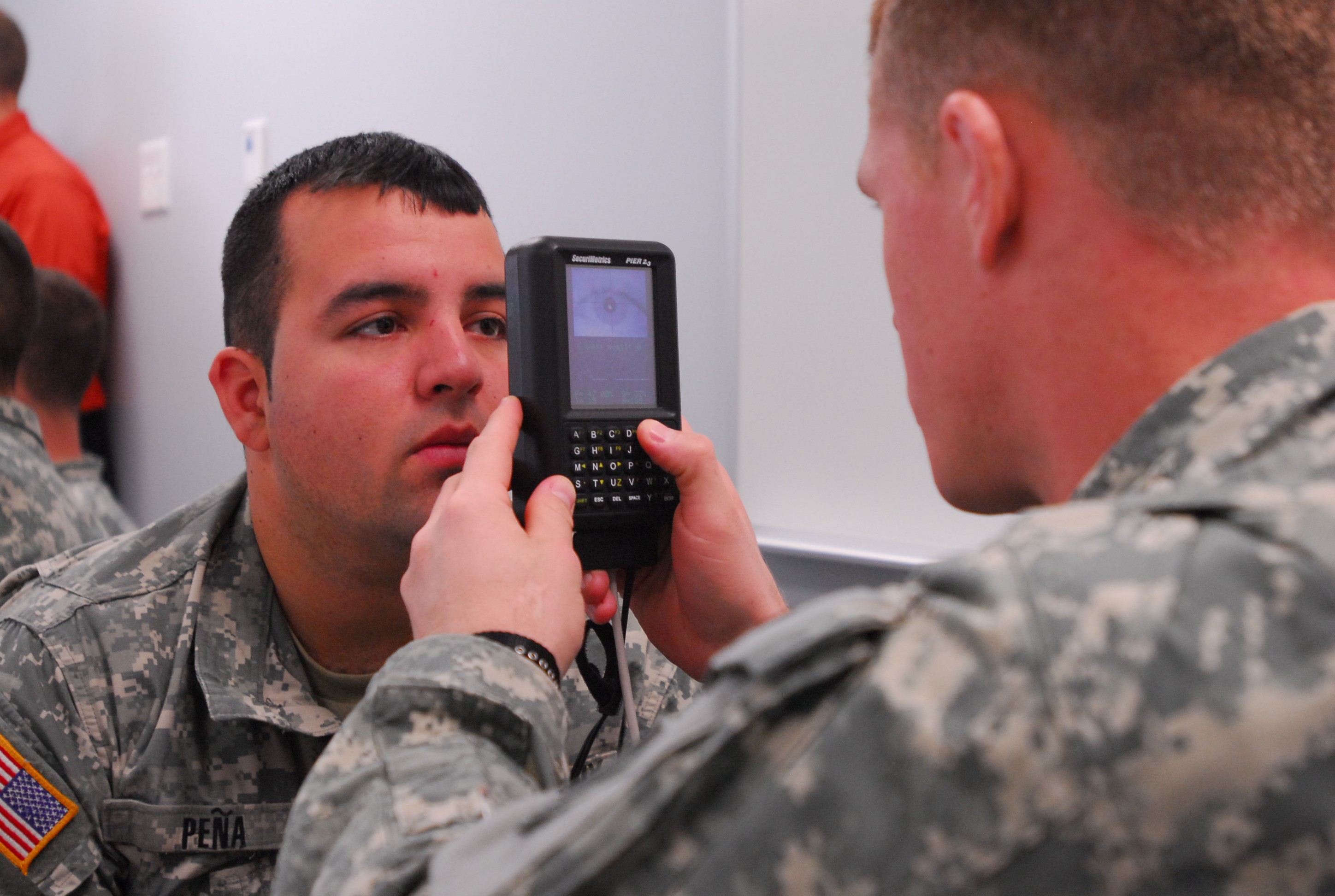
<B>FORT STEWART, Ga.</B>- Soldiers can now capture the enemy with the help of an electronic device about the size of a Polaroid camera. A mobile training team from the New System Integration Training Office at Fort Huachuca, Ariz., taught 3rd Battalion, 7th Infantry Regiment, 4th Infantry Brigade Combat Team Soldiers how to operate the Handheld Interagency Identity Detection Equipment (or HIIDE) - a gadget with the power to positively identify high-value targets in Iraq and Afghanistan.
The HIIDE is a portable version of the Biometrics Automated Toolset - a four-piece kit consisting of a laptop, digital camera, fingerprint scanner and an iris reader that stores unique biometric information. Photos, fingerprints and irises are computed into the BAT where they can be matched with the biometrics of terrorists and other enemy persons.
"The HIIDE allows Soldiers to use the BAT system outside the wire, out on patrol," said Nick Brantley, biometrics trainer and developer who taught the Basic Biometrics Operators Course to 3/7 Inf. Regt. troops here, Jan. 11. "It's more effective than asking for an (identification card); biometrics can't be doctored."
Brantley explained that HIIDE can detect any individual who has been previously enrolled into a biometric database through the BAT system. He said that deployed Soldiers will enroll Iraqi and Afghani citizens into the database at checkpoints, Forward Operating Bases and during cordon and searches in the villages where security is heightened. The database is monitored by Department of Defense agencies, the Criminal Investigation Department and the Federal Bureau of Investigation, he said.
There are two classes of the database - red and green. Most individuals come up 'green' and harmless, but there are those individuals who have been coded 'red' - potential threats.
Todd Kimsey, who taught the basic biometrics class alongside Brantley, said the Army's goal is to enroll the entire Iraqi population into the database. That's more than 31 million sets of fingerprints and irises. So far, he said, more than 2 million Iraqis have been enrolled.
"You'll enroll approximately 12,000 individuals per week," Kimsey told the infantry Soldiers who are slated to deploy to Iraq this summer.
The 3/7 Inf. Regt. is part of the 3rd Infantry Division's sole light-infantry brigade. The brigade rid its hefty equipment and converted into a lighter-fighting force last year. The portable biometrics device (HIIDE) goes hand-in-hand with the 4th IBCT's light-fighting initiative, Brantley said, adding that the basic biometrics class will better prepare the light-fighters for their upcoming mission.
"The Soldiers may not catch every enemy, but the (HIIDE) will definitely help reduce the violence and terrorist activity."

Social Sharing